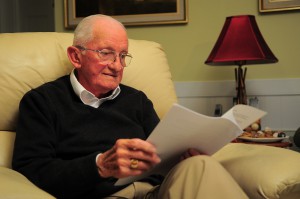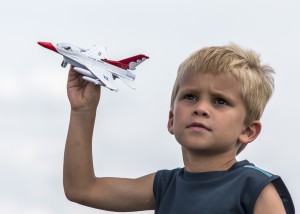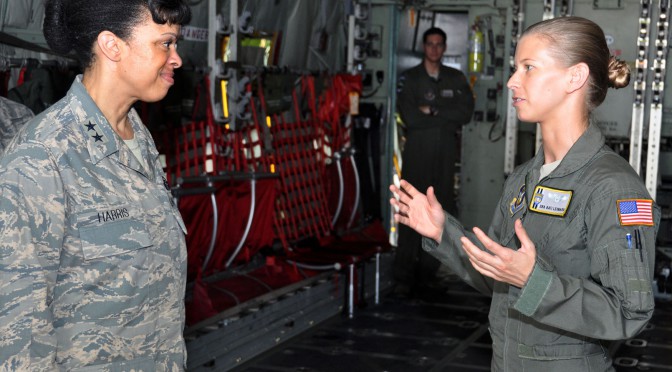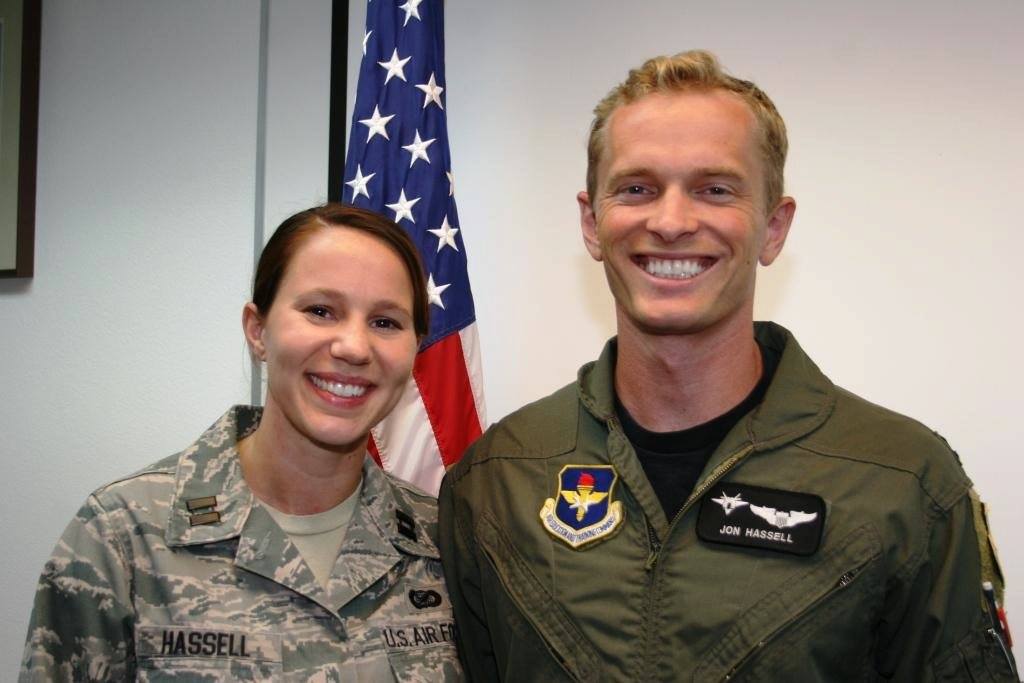by Senior Airman Mariah Tolbert
4th Fighter Wing Public Affairs
 SEYMOUR JOHNSON AIR FORCE BASE, N.C. — “I was pretty young with all this but I was probably, at first, more revengeful than I should have been. When the occasion arose, I did not give the Germans very much of a chance. I took it out on them. I may have been wrong but I guess I was very vengeful so I didn’t give them a break, but I overcame that,” explained retired Air Force Lt. Col. Harry Pawlik.
SEYMOUR JOHNSON AIR FORCE BASE, N.C. — “I was pretty young with all this but I was probably, at first, more revengeful than I should have been. When the occasion arose, I did not give the Germans very much of a chance. I took it out on them. I may have been wrong but I guess I was very vengeful so I didn’t give them a break, but I overcame that,” explained retired Air Force Lt. Col. Harry Pawlik.
From concentration camp survivor to fighter pilot in the world’s greatest Air Force, Pawlik has turned what would be a horrific experience into a life that was unimaginable to him nearly 74 years ago.
Pawlik was born in Poland Dec. 19, 1929, but that is just the beginning of his story.
On Sept. 1, 1939, when Nazi Germany invaded Poland, the world was forever changed, and for Pawlik, who was nearly 10 years old, life became a whirlwind journey.
The 1939 invasion resulted in Pawlik being separated from his family, never to see them again or really remember them. He explained at some point during World War II, he suffered a head injury from a piece of shrapnel, resulting in some memory loss.
“When they took me on that train, that’s when I lost my family. Never to be seen again,” he said. “Somewhere along the way, the train was stopped and the SS took over. They took us to a concentration camp — to Mauthausen, in Austria.”
After being separated from his family, Pawlik was immediately placed into several slave labor and concentration camps. For the next five years, he moved around Europe, forced to work under extreme conditions.
 “We weren’t treated very well and one of the big things I know is if it hadn’t been for the older people, (the younger ones) wouldn’t have survived,” Pawlik said. “They did everything they could to help and that’s one of the reasons I now admire and support anything similar to what I went through.”
“We weren’t treated very well and one of the big things I know is if it hadn’t been for the older people, (the younger ones) wouldn’t have survived,” Pawlik said. “They did everything they could to help and that’s one of the reasons I now admire and support anything similar to what I went through.”
Prisoners, including Pawlik, were denied open access to bathrooms, water and clothing, and lived off small rations of potatoes, cabbage and beef or bean soup. They were expected to work long, hard hours and if they got sick or couldn’t work, the prisoners were killed.
Pawlik reminisced about many things he witnessed in concentration camps.
“It was called the Todesstiege — the Staircase of Death,” he explained. “They had people six abreast carrying 40 to 50 pound granite slabs up the steps to build the fence. You can imagine, with the condition the prisoners were in, what it was like. Most of the people were killed on those steps. They didn’t even have a chance.”
In the winter of 1944, things took a turn for the better.
While held in a concentration camp near Belgium, he and other prisoners were freed by a contingent of Polish forces with General Patton’s 3rd Army and 11th Armored Division. From here, he connected with the 11th AD and learned to speak English from the soldiers.
“Of course being rescued by the American Army was a super thing,” he said. “I was very fortunate to be picked up. You can imagine there were many of us in the same boat, and I was one of the lucky ones who survived. I was treated well and given a new life to look forward to.”
In Dec. 1944, Pawlik got his first taste of combat when the 11th AD engaged the Nazis in the Battle of the Bulge. By default, Pawlik became a 14-year-old American soldier, a Freedom Fighter, serving alongside U.S. forces.
He tells his friends and family that fighting against the Germans gave him an opportunity to rise up and fight those who took away his freedom, innocence and family.
“I realized we were on opposite sides,” he explained. “They were doing their job and I was doing my job. Of course, I didn’t agree with everything they did. But, that was their business.”
After fighting in the Battle of the Bulge and several other conflicts, Pawlik moved to Vienna, Austria, with a friend who was assigned to the 505th Military Police. Here, Pawlik was an invaluable resource to the unit he worked with by serving as an interpreter for the International Patrol.
Pawlik soon made it known that he wanted to come to the United States.
“Europe was not for me,” he said. “It was devastated. I had no people left, no family, no anything. As soon as I learned things about America, I made plans and did everything I could to get there, and I had help.”
There were more than 2 million applicants wanting to come to the United States in the summer of 1947. However, with Pawlik’s connections and recommendations, he was moved to the head of the list and received approval from six different countries in less than two months.
At the age of 17, he arrived in New York Harbor nearly three months later with just two suitcases and $120 in his pocket.
“We pulled into New York Harbor at night,” he explained. “When we were getting in, I asked who was in charge if I could stay on deck and see the lights of New York. I took a rope and I tied myself to a pole on the deck so I wouldn’t be blown away. I saw the Statue of Liberty, the beautiful lady with that flame. It was quite a moment for me.”
After graduating Albemarle High School, N.C., in 1950, a local businessman named Chuck Daniels, paid for Pawlik’s first two years of college at the University of North Carolina.
During his time in college, Pawlik was selected as the Outstanding Junior Air Force ROTC Cadet in the Nation and received the General Hap Arnold Silver Medal. He was inducted into three honor societies, all on top of being a co-captain of the university’s soccer and wrestling teams and working several jobs.
After becoming a U.S. citizen in July 1953 and graduating University of North Carolina in 1954, Pawlik commissioned into the Air Force.
“I wanted to pay the country back for being so great and nice to me,” he said. “I didn’t have much money or education, and I wanted to start out making something of myself. And of course, they gave me a flying job, and I loved flying.”
Throughout his career, Pawlik flew T-28s, T-34s, T-33s, B-47, B-52s, F-105s and F-111 aircraft. Overall, he flew 101 missions over North Vietnam, 21 over Laos, and 33 other missions and was hit by enemy fire seven different times.
Pawlik says that his story is not about being a prisoner of war; it’s about his first taste of freedom after being held captive and what those experiences have done for him.
“I owe freedom and the chance for a new life to this great nation,” Pawlik explained. “Back then, the idea of freedom, to me, was a wonderful thing. It really was. And all these years later, it still is. Freedom is still just a beautiful thing.”
PHOTO 1: Retired U.S. Air Force Lt. Col. Harry Pawlik, center, and his team pose together after earning first place in a bombing competition in Upper Heyford, England, in 1975. Pawlik is a concentration camp survivor who joined the Air Force after gaining citizenship. (Courtesy photo)
PHOTO 2: U.S. Air Force retired Lt. Col. Harry Pawlik reviews a speech written in his honor at his home in Greenville, N.C., Jan. 3, 2013. Pawlik, a World War II concentration camp survivor, recalled several obstacles from the time he was captured by Nazi forces at the age of 10, to the day he graduated from the Naval War College during a recent interview. (U.S. Air Force photo by Airman 1st Class Aubrey White)










